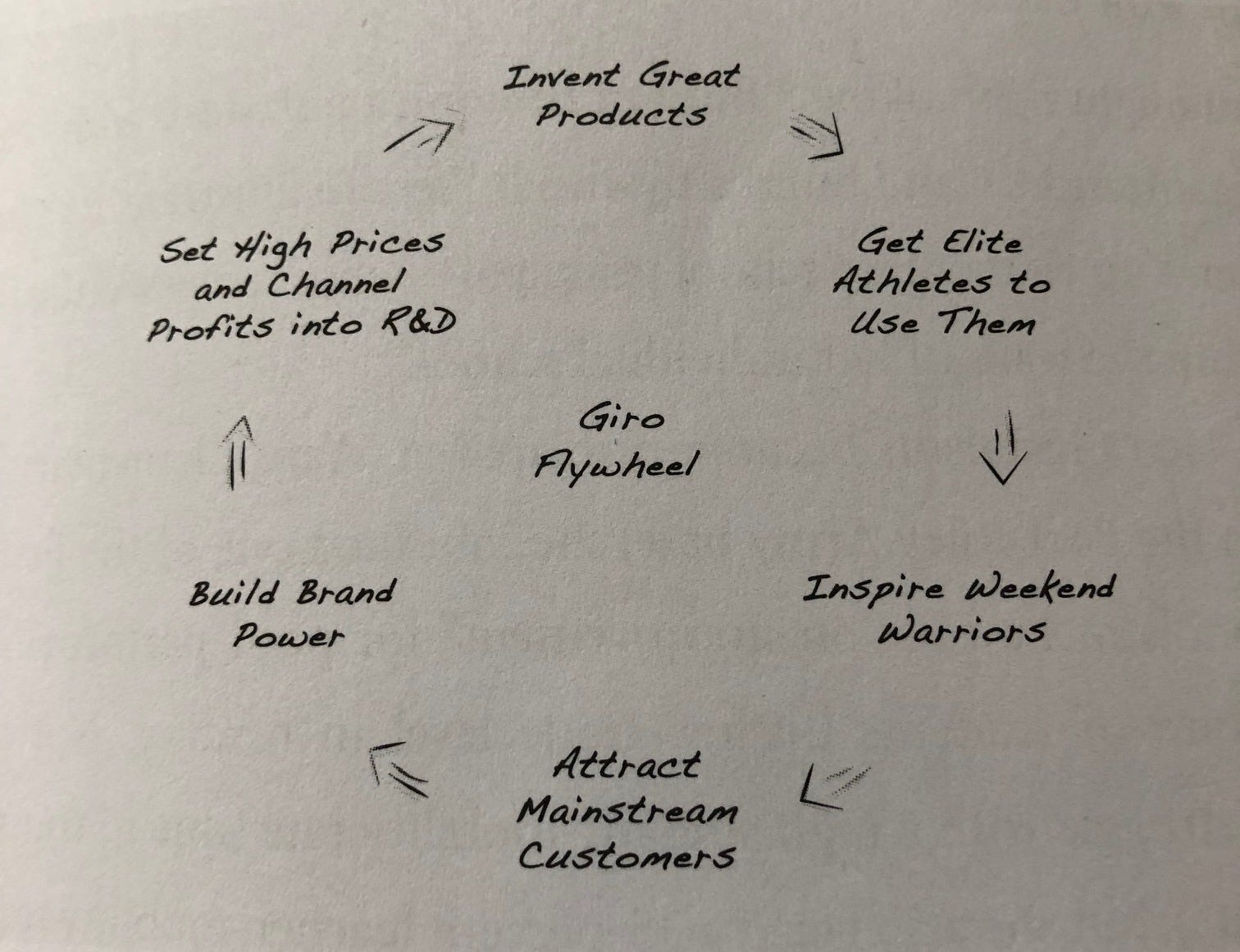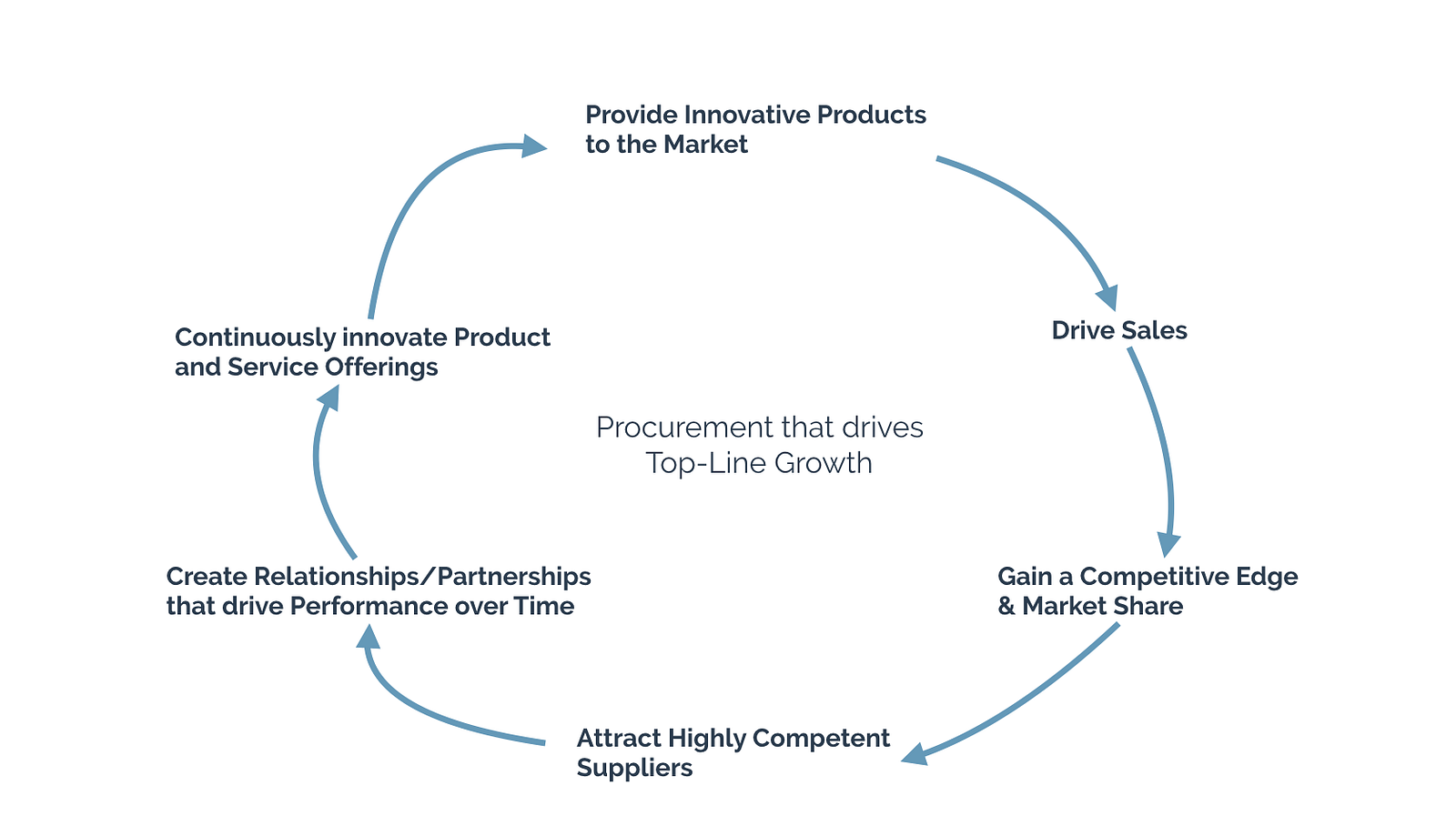Performance, especially when it’s successful performance, is a peculiar occurrence.
High performing professionals and high-performing businesses may be high-performers because they got lucky, or maybe because the road to success was meticulously calculated and executed.
One thing is certain. Without working to locate the indicators and impacts of creating top-performance, it is rather difficult to repeat. Sure, you could get lucky again and have the right timing, but will that kind of performance be sustainable or built to last?
I’d like to introduce a concept spoken about a lot in tech ventures, especially in growth ventures, and organizations looking to make the good-to-great transition, which is the concept of the Flywheel.
In essence, a flywheel — when correctly defined and tested — can serve as a propeller towards success in any function, organization or team.
Let’s try and find your procurement team’s flywheel, and make it spin!
What is a ‘Flywheel’?
From the book “Turning the Flywheel” by Jim Collins, he digs into the commonalities of companies and organizations that went from being good-to-great. Some which he consulted, and inspired, others who did it all by themselves.
But, one thing is common in the cases he delves into; They located their flywheel, refined it, and made it turn at lightspeed to create great organizational success.
“In creating a good-to-great transformation, there’s no single defining action, no grand program, no single killer innovation, no solitary lucky break, no miracle moment. Rather, it feels like turning a giant, heavy flywheel. Pushing with persistent effort, you get the flywheel to inch forward. You keep pushing, and with persistent effort, you get the flywheel to complete one entire turn. You don’t stop. You keep pushing. The flywheel moves a bit faster. Two turns… then four… then eight… the flywheel builds momentum… sixteen… thirty-two… moving faster… a thousand… ten thousand… a hundred thousand. Then at some point — breakthrough! The flywheel flies forward with unstoppable momentum” (Collins, Turning the Flywheel, p. 1).
Essentially, a flywheel is a methodical location of KPIs, the processes required to reach high-performance, and a refinement/simplification of that process. The flywheel then serves as a model to be mirrored in the everyday operations of an organization or team. With persistence and will, continuing to push forward a flywheel, that works, ultimately results in catapulting an organization or function towards greatness, and an utterly unstoppable forward momentum.
Finding and Refining a Flywheel
Finding a flywheel is one thing. Refining it is another.
Finding and refining a flywheel is all about exploiting the things that work, not overcomplicating the process, and cutting out unnecessary activities or strategies. Focusing in on the really essential elements of the core business, and continue to execute upon the things that really show results.
Jim Collins defines a 7 step process to be able to ‘Capture your Flywheel’ that could be useful for organizations that are functioning well, but look to be great.
- Create a list of significant success that has proven to create a positive impact on your organization.
- Draw a line down the middle of the paper, and create a list of failures or disappointments on the other side.
- Use these lists to compare the successes to the failures. These will be the baseline to understanding the possible components of your flywheel.
- Use the components you’ve identified (4 to 6 steps in total) to start sketching out your flywheel. What’s the ultimate goal of the flywheel? Where do we start? What’s after that? And, after that? Each component of the flywheel should be a side-effect of the last, and the loop should be completed by the last element of the flywheel perpetuating success back into the first.
- Consolidate your flywheel, because you’ve likely made it longer than six components.
- Test the flywheel by putting it next to your list of successes and failures, and begin to tweak the flywheel until it directly mirrors your biggest success, and could be seen as a failure adhere to when it comes to your disappointments.
- Test against the Hedgehog Concept and see if the flywheel fits into the following elements: 1) what you’re passionate about, 2) what you can be best in the world at, 3) what drives your economic or resource engine (Collins, Turning the Flywheel, p. 9 & 10).
After finding and refining your flywheel, you should be able to see a clear correlation between the steps, with each step being a consequence of the step before, feeding back into the ultimate goal.
You should be able to look at the list of success and answer yes to the question: “Have I really defined the common denominator in all of these successes?”
You should also be able to look at your list of failures, and say “We could have avoided this mistake/disappointment if we had stuck to our flywheel”.
What I find very compelling about the concept of the flywheel is it’s applicability in various contexts of business, regardless of the size of the organization, team or process, one is looking to improve. It’s industry agnostic and requires one to stick to the KISS principle (keep it simple, stupid).
Flywheels that Work
Flywheels don’t need to be revolutionary. They don’t even necessarily need to be unique.
Here are some flywheels that Jim Collins has seen work, and they’ve inspired me to get thinking about procurement’s flywheel and how this concept is so applicable to various verticals, functions, and teams.
Amazon’s Flywheel

Amazon, once just a quaint website in the e-commerce business, and now the mega-brand, owning a piece of just about every market share follows this flywheel religiously.
Each step of the flywheel methodically feeding into the next. The simplicity and infallibility is something to admire about this particular flywheel.
“Your flywheel will almost certainly not be identical to Amazon’s, but it should be just as clear and it’s logic equally as sound” (Collins, Turning the Flywheel, p. 3).
Intel’s Flywheel

Intel’s flywheel screams durability and applicability.
In the ’80s their lucrative memory-chip business of the past decades took a steady, but definitive decline.
So… did Intel, decide to roll over on their back and get out while they still had a chance?
No, but they knew that memory-chips weren’t going to bring them the same success as they’ve previously had.
They pivoted. They scrapped production and turned their focus towards microprocessor chips instead of memory chips. “It was really more of a transfer of momentum from memories to microprocessors, not a jagged break to create an entirely new flywheel. If Intel had tossed out its underlying flywheel architecture when it exited to memories, it wouldn’t have become the dominant chip maker that powered the personal computer revolution” (Collins, Turning the Flywheel, p. 7)
Building a sustainable flywheel is all about trying to be specific to your business, but allow it to be flexible enough that a pivot is possible. And, after that pivot, you’ll still be able to apply the underlying success of the original flywheel.
Giro’s Flywheel

Giro is a classic example of a copy-paste success story.
Nike was the inspiration of Giro Sport Design’s founder Jim Gentes. He saw Nike’s flywheel or road to success as a role model for the kind of sporting goods company he was looking to build as well.
The story is rather fantastic, but to keep it short, Gentes bet everything on gaining sponsorship from Greg LeMond, who was competing in the 1989 Tour de France. LeMond made an astonishing comeback during the Tour and ended up winning it all, with a Giro helmet atop his dome (Collins, Turning the Flywheel, p.11).
Catapulting Giro’s flywheel forward with furious momentum.
Giro’s flywheel is a perfect example that to innovate, you don’t need to reinvent the wheel. The nucleus of all innovation is a great idea, and a will to make something possible. Whoever said the process of making that idea a reality has to be your own?
Finding Procurement’s Flywheel
Procurement is a function, role, and industry undergoing a shift, and with change comes to change management.
Managing change in a controlled manner requires processes, champions, and open-minded teams.
So… why not take this opportunity to really get to the root of your successes, and try and avoid past failures repeating themselves, so you can understand what strategies to bring into the future of your procurement team, and which you would like to leave with the traditionalists.
I’ve taken a crack at finding procurement’s flywheel. This is a narrow interpretation of a procurement cycle, and end goal, but is likely applicable in multiple organizations. Considering I work daily with enhancing the SRM and SPM of procurement teams, I see the importance of putting the focus on supplier relationship management.
When we’re getting down to the real essence of successful procurement, we’re looking at creating an innovative product offering to the market to create top-line profits for the organization, whilst saving on bottom-line costs. A lot of that innovation and revenue growth comes from a supplier base. With, “25%-45% of revenues coming from product innovation and up to 65% of innovations sourced externally through external partners and suppliers, SEI represents a treasure trove of opportunity” (Abdullah 2017).”
So…. What’s procurement’s flywheel?
The definition of your flywheel should be individual to your procurement organization, following the steps suggested by Collins from his short Monograph, Turning the Flywheel.
But, this is an example of procurement’s flywheel that may give you some inspiration, and get your brain wheels turning.

- Provide Innovative Products to the Market
- Drive Sales
- Gain a Competitive Edge and Market Share
- Attract Highly Competent Suppliers
- Create Relationships/Partnerships that drive Performance over Time
- Continuously develop Product and Service Offerings
Notice that this flywheel is only 6 components, each being a consequence of the one before, seamlessly feeding back into the end goal of Providing Innovative Products to the Market.
I’ve opened the toolbox, and you now have the hammer and the nail.
Now go find your flywheel and pin it up on the wall!
Until next time.





